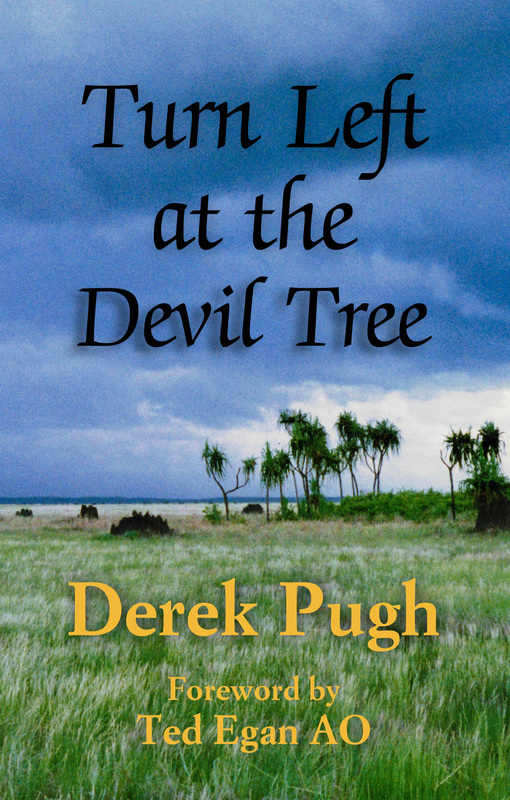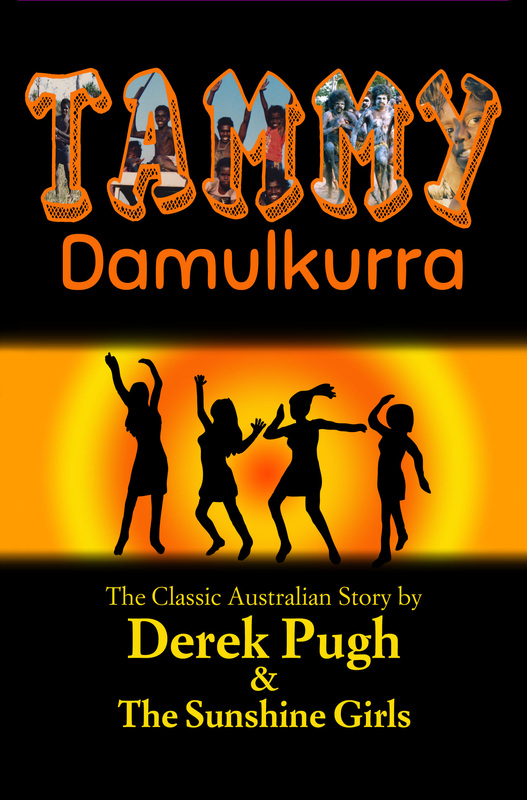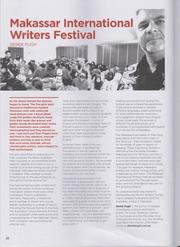DEREK PUGH NEW BOOK... Turn Left at the Devil Tree (from The Lombok Guide, issue 158
Lombok seems to be fertile ground for writers, with another of our resident expats – Derek Pugh – having recently published his third book.
Derek’s new book, “Turn Left at the Devil Tree”, was released on 1 December 2013 and is his latest work. The book will be launched in Lombok on 11 January by Mark Heyward, who published his own book “Crazy Little Heaven” in August last year.
Derek’s previous books include “Tammy Damulkurra”, a fictional story published in1995 (2nd edition 2013), and “The Owner’s Guide to the Teenage Brain, teaching teachers, parents and teenagers how to get the most out of their brains”, a non-fiction work published in 2011.
“Tammy Damulkurra”, has been described as a “Classic Australian Story” and a “Landmark in Australian Literature”.
“Turn Left at the Devil Tree” promises to be equally successful. The new book, with a foreword by Ted Egan AO, describes life as a visiting teacher in the most remotes parts of the Top End of Australia.
The title words were the only directions he had to find Wurdeja Homeland Centre in the vast forests of central Arnhem Land, but find it he did and he founded and ran a school there for four years.
Pugh’s story describes his love affair with the bush, the characters that live there and its wildlife. Working with Indigenous Australians in the most remote parts of the country has its share of challenges and successes, but life as a visiting teacher in Arnhem Land is tremendously fulfilling.
Derek Pugh, an ex Kakadu ranger, a teacher, naturalist and bushman worked in several homelands schools and joined a lifestyle as old as time. His memoir is by turns reflective, tragic and hilarious and describes a life in remote Aboriginal Australia which gave him an insight into a traditional culture which has been witnessed by only a few outsiders.
Spending more than 20 years among the people and wildlife of the Top End of the Northern Territory, and accompanied by his ‘rough-tough hunting dog’ named Turkey, Derek Pugh revelled in the lifestyle and freedom of the bush. Told with respect and candour, “Turn Left at the Devil Tree” is Pugh’s ‘slice of history’.
“Turn Left at the Devil Tree” is distributed by Dennis Jones and Associates, www.dennisjones.com.au. For more information, visit: www.derekpugh.com.au
Taman Restaurant in Senggigi, together with The Lombok Writers Guild, will host the Lombok launch of “Turn Left at the Devil Tree” in conjunction with a wine tasting by Plaga Wines on Saturday, 11 January starting at 5pm. Copies of Derek’s and Mark’s books will also be on sale. All are welcome to attend!
Lombok seems to be fertile ground for writers, with another of our resident expats – Derek Pugh – having recently published his third book.
Derek’s new book, “Turn Left at the Devil Tree”, was released on 1 December 2013 and is his latest work. The book will be launched in Lombok on 11 January by Mark Heyward, who published his own book “Crazy Little Heaven” in August last year.
Derek’s previous books include “Tammy Damulkurra”, a fictional story published in1995 (2nd edition 2013), and “The Owner’s Guide to the Teenage Brain, teaching teachers, parents and teenagers how to get the most out of their brains”, a non-fiction work published in 2011.
“Tammy Damulkurra”, has been described as a “Classic Australian Story” and a “Landmark in Australian Literature”.
“Turn Left at the Devil Tree” promises to be equally successful. The new book, with a foreword by Ted Egan AO, describes life as a visiting teacher in the most remotes parts of the Top End of Australia.
The title words were the only directions he had to find Wurdeja Homeland Centre in the vast forests of central Arnhem Land, but find it he did and he founded and ran a school there for four years.
Pugh’s story describes his love affair with the bush, the characters that live there and its wildlife. Working with Indigenous Australians in the most remote parts of the country has its share of challenges and successes, but life as a visiting teacher in Arnhem Land is tremendously fulfilling.
Derek Pugh, an ex Kakadu ranger, a teacher, naturalist and bushman worked in several homelands schools and joined a lifestyle as old as time. His memoir is by turns reflective, tragic and hilarious and describes a life in remote Aboriginal Australia which gave him an insight into a traditional culture which has been witnessed by only a few outsiders.
Spending more than 20 years among the people and wildlife of the Top End of the Northern Territory, and accompanied by his ‘rough-tough hunting dog’ named Turkey, Derek Pugh revelled in the lifestyle and freedom of the bush. Told with respect and candour, “Turn Left at the Devil Tree” is Pugh’s ‘slice of history’.
“Turn Left at the Devil Tree” is distributed by Dennis Jones and Associates, www.dennisjones.com.au. For more information, visit: www.derekpugh.com.au
Taman Restaurant in Senggigi, together with The Lombok Writers Guild, will host the Lombok launch of “Turn Left at the Devil Tree” in conjunction with a wine tasting by Plaga Wines on Saturday, 11 January starting at 5pm. Copies of Derek’s and Mark’s books will also be on sale. All are welcome to attend!




 RSS Feed
RSS Feed